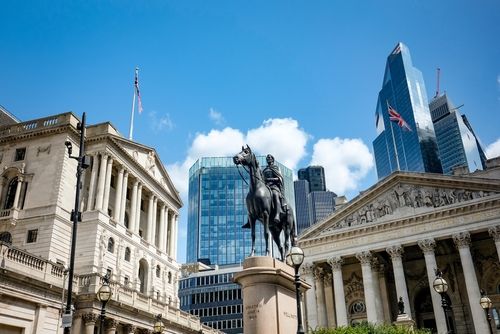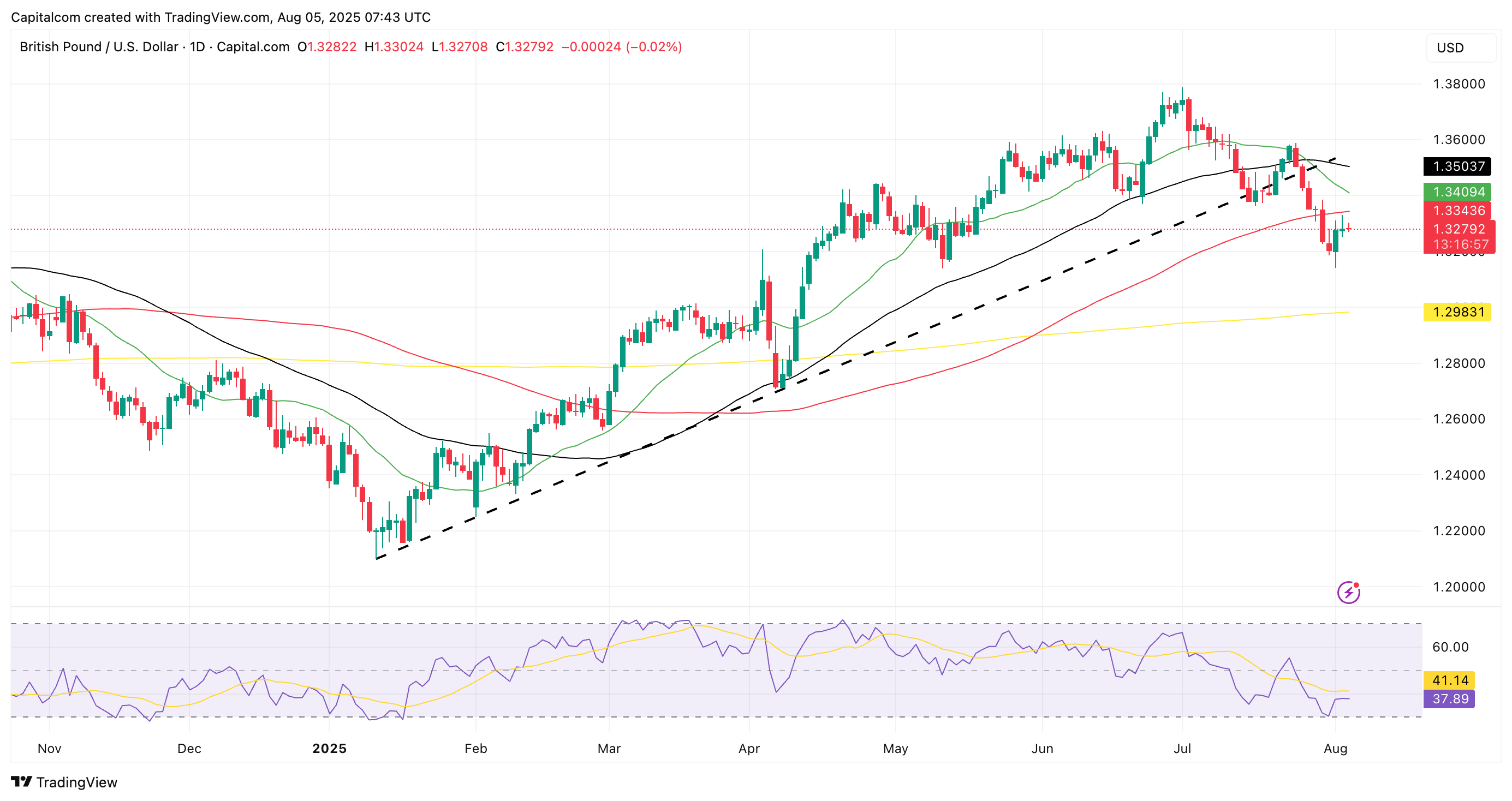Bank of England Preview: Further easing expected
The Bank of England is expected to lower rates by 25 bps in August but the vote split may give markets further insight into the MPC's outlook
The Bank of England (BoE) is widely expected to cut interest rates by 25 basis points at its policy meeting this Thursday. However, this decision comes against a complex economic backdrop, leaving policymakers in a difficult position. The UK appears caught between the economic paths of the eurozone and the United States—experiencing sluggish growth and stubborn inflation like the former, while mimicking the Fed’s measured approach to easing, with one cut per quarter.
Stagflation concerns and a divided MPC
Recent data suggests emerging signs of weakness in the UK economy, especially within the labour market, even as inflation remains above the BoE’s target. This raises fears of stagflation, complicating the central bank's easing trajectory.
The vote split among Monetary Policy Committee (MPC) members will be a focal point. A three-way split is possible, with a base case for a 25bp cut, but some members may advocate for keeping rates on hold, and a few could even favour a more aggressive 50bp cut amid concerns that monetary policy remains overly restrictive. Markets will closely watch how dovish the dissenting voices are, as this could shift expectations for further easing in the coming months.
While lower rates may provide some relief to households, the BoE’s impact is constrained by structural issues in the UK economy. Notably, the pass-through of interest rate changes to consumers has been slow due to the nature of the UK’s mortgage and credit markets.
As a result, rate cuts have so far disproportionately affected savers (through lower deposit rates), while borrowers have yet to fully benefit. This weakens the transmission mechanism of monetary policy and may limit the effectiveness of further cuts in stimulating domestic demand.
Market Implications – focus on vote split and forward guidance
From a market’s perspective, the pound has struggled to find support in recent weeks. While the Bank of England’s decision is mostly priced in, volatility may arise depending on the composition of the vote and the tone of the statement. Any indication that a larger rate cut was considered—or might be imminent—could add downside pressure to the pound.
- GBP/USD has been largely dominated by dollar moves, but further declines in the pound are possible, particularly if US dollar strength continues.
- More GBP-sensitive trades may emerge in crosses like EUR/GBP and GBP/JPY, where BoE commentary may have more influence.
Technically, cable has broken below key support levels, including the ascending trendline from earlier in the year and the 100-day moving average. The RSI suggests a market that is close to oversold, but Friday’s reversal hints at lingering buyer interest around the 1.32 level.
GBP/USD daily chart

(Past performance is not a reliable indicator of future results)
Conclusion: policy inflection point amid fragile growth
The BoE’s August meeting could represent a critical inflection point in its rate-cutting cycle. While a 25bp cut is expected, the distribution of votes and language around inflation and growth will determine how markets interpret the BoE’s path forward. With inflation still above 3% and domestic growth flagging, the central bank must walk a fine line between easing financial conditions and maintaining price stability.
Forward guidance and MPC sentiment will likely drive the pound’s direction into the autumn, especially as markets recalibrate their expectations for additional rate moves before year-end.